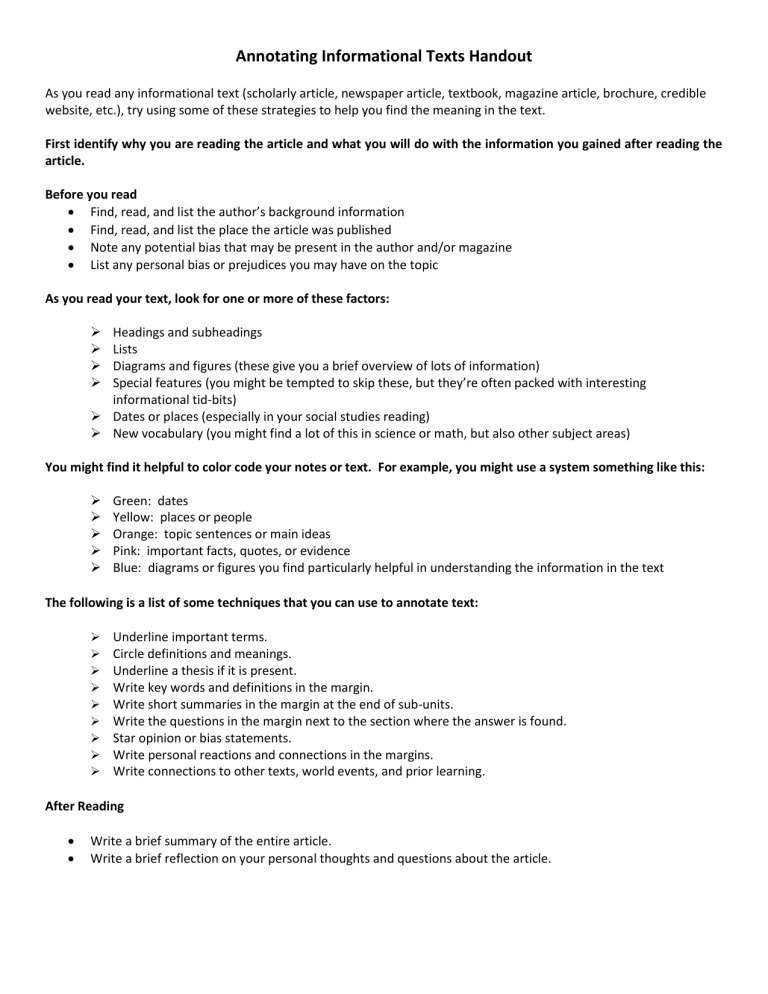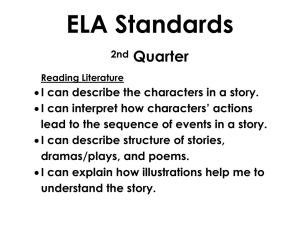
Annotating Informational Texts Handout As you read any informational text (scholarly article, newspaper article, textbook, magazine article, brochure, credible website, etc.), try using some of these strategies to help you find the meaning in the text. First identify why you are reading the article and what you will do with the information you gained after reading the article. Before you read Find, read, and list the author’s background information Find, read, and list the place the article was published Note any potential bias that may be present in the author and/or magazine List any personal bias or prejudices you may have on the topic As you read your text, look for one or more of these factors: Headings and subheadings Lists Diagrams and figures (these give you a brief overview of lots of information) Special features (you might be tempted to skip these, but they’re often packed with interesting informational tid-bits) Dates or places (especially in your social studies reading) New vocabulary (you might find a lot of this in science or math, but also other subject areas) You might find it helpful to color code your notes or text. For example, you might use a system something like this: Green: dates Yellow: places or people Orange: topic sentences or main ideas Pink: important facts, quotes, or evidence Blue: diagrams or figures you find particularly helpful in understanding the information in the text The following is a list of some techniques that you can use to annotate text: Underline important terms. Circle definitions and meanings. Underline a thesis if it is present. Write key words and definitions in the margin. Write short summaries in the margin at the end of sub-units. Write the questions in the margin next to the section where the answer is found. Star opinion or bias statements. Write personal reactions and connections in the margins. Write connections to other texts, world events, and prior learning. After Reading Write a brief summary of the entire article. Write a brief reflection on your personal thoughts and questions about the article.


